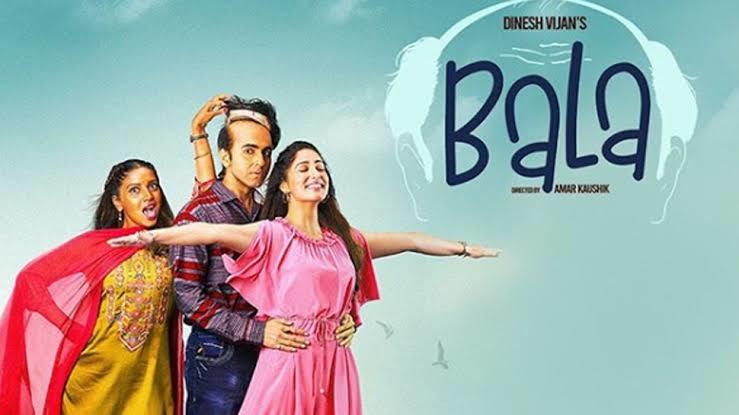Message For Bollywood: Dark is Not an Ugly Word

Subtle colourism in art, literature and other forms of creative expression are hardly new. Even schools are not immune to the obsession. In kindergartens, many are still taught that the alphabet ‘U’ stands for the word ‘ugly’. And next to the word is displayed an illustration, typically of a darker-skinned woman. Consider the very first verse in the popular song from the 1965 Bollywood thriller, Gumnaam, sung by Mohammad Rafi. The lyrics are: Hum kaaley hain toh kya hua, dilwaley hain—I may be dark but I am large-hearted.
Such expressions have augmented the unfair and unrealistic obsession with fair skin in India. In the advertising space, the rules prohibit showing darker-complexioned people as unattractive or displeased with their skin tone. Yet, such representations continue, quite unchecked, through indirect modes. This preoccupation with fair skin in India has not only led to exclusion and marginalisation of women—even men—with darker skin colours. It also robs people of their self-esteem, and this begins at an early age. Especially for women, the fetish for lighter skin can have severe tangible disastrous consequences.
For example, last month came the news of a young woman in Rajasthan committing suicide because her husband allegedly harassed her for being dark-skinned. In 2016, a woman in West Bengal was reportedly killed by her in-laws who felt she was ‘too dark’. In Rampur district of Uttar Pradesh, a man attempted to divorce his wife last year, using the now-outlawed mode of instant triple talaq, and one reason she cited was her husband’s preoccupation with fair skin.
Indeed, a line demarcates reel-life from real-life. The question is, can we dismiss what goes on on-screen, believing that it will not have any impact on the world outside theatres. Movies that depict living human characters are considered most easily relatable, loveable and even sacred by audiences. Therefore, directors and storytellers who promote fair skin as the norm and darker skin tones as a negative or unwanted physical trait are failing to fulfil their responsibility to mend reality.
Films can bring the imaginary closer to the real. That is why, when women are habitually depicted as lighter-complexioned, what is on-screen collides with the real world that women actually exist in. India’s television series and films don’t just indulge in representation of fairer-skinned people, but endorsement of lighter skin tones. For example, even subtle and minute portrayals of darker-skinned people as negative on-screen characters can create mammoth risks for women—for it is they who bear most of the consequences of social stigmatisation.
True, many other forms of expression indulge in colour-shaming too, but it is Bollywood that has the most influence over society and culture. India’s colossal film industry produces around 1,000 movies a year in around 30 languages and caters to nearly 14 million daily movie-goers. This is another reason to believe that social evils will inevitably manifest beyond the screen, in real lives. For all these reasons, intuitive and statistical, Bollywood must make a change.
Colourism prevails in Bollywood on both sides of the camera. During a verbal duel between actors Kareena Kapoor and Bipasha Basu in May this year, Kapoor referred to Basu as a kaali billi or black cat. At a recent show in Bangalore, actor Sara Ali Khan controversially stated that makeup can be used to change skin colour. In the 2006 movie Vivah, a relative of the orphaned protagonist dislikes her for being fairer-skinned than her daughter. In the Madhur Bhandarkar film Fashion, actor Priyanka Chopra plays a failing model who has a breakdown on learning that she had unknowingly slept with a black man, taking racism and colourism to a new low, even for Bollywood.
Recently, the Ayushmann Khurrana, Bhumi Pednekar and Yami Gautam starrer, Bala, joined the colourism club. The film sought to drive home the importance of self-validation and self-love, but defeated itself by picking Pednekar for the role and deliberately, self-consciously, painting her into a darker skin tone. The film could simply have auditioned an actress who is dark-skinned for the role. A sensible cast could have sensitised the audience to the perils of colourism. Instead, it has become another instance of the hypocrisy of Bollywood. (Though there have been some, few, notable exceptions.) Such “errors” in casting female protagonists highlight the all-pervasive aversion in the film industry to anything but fair-skinned actors. This is why Bollywood has few, if any, dark-skinned actors and those who are given roles are painted over to appear fairer.
A section of the audience and many movie critics might forget these incidents. They may call each such instance as yet another “trivial” matter. Yet, on-screen insensitivity should not be labeled as immaterial or intangible. Society will be transformed only when perceptions change—in reel-life and in real life.
Estimates say that the worldwide market for fairness creams will skyrocket to $23 billion by 2020. India’s market for fairness products and bleaches is valued at roughly $450 million (Rs 3234 crore). Meanwhile, brides are being abandoned, killed and harassed over their skin colour. In this context, is certainly not okay that Bollywood films are trying to mainstream whiter skin tones as the normal.
A sense of how serious the crisis is should grip film-makers, producers and their audiences. This moment calls upon them to mend reality using their “reel-ities”. The movie industry needs more sensible stories and inclusive casting. Storytellers have serious social responsibility, as they turn imagination into reality. They must take these criticisms seriously.
Anchal Bhatheja is a student at the National Law School of India University (NLSIU), Bangalore. The views are personal.
Get the latest reports & analysis with people's perspective on Protests, movements & deep analytical videos, discussions of the current affairs in your Telegram app. Subscribe to NewsClick's Telegram channel & get Real-Time updates on stories, as they get published on our website.














